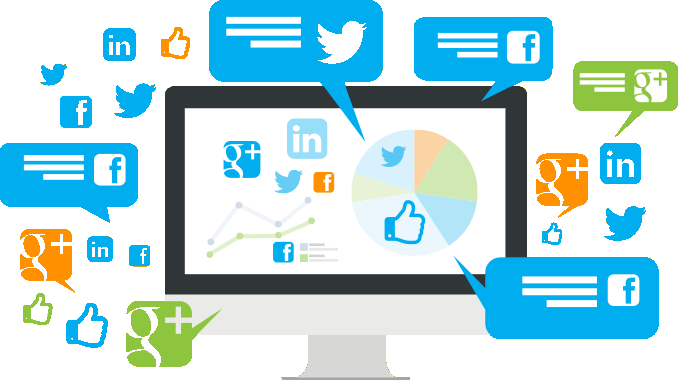 Lately, we’ve been writing about social listening quite a bit. It’s not that social listening is a new subject. Instead, it is just that we believe we should be thorough with whatever subject we choose to write about. We’ve covered social listening from various perspectives including why it is important, how a social listening strategy can be created, and even what the social listening process flow should look like. However, as anyone with an iota of experience knows, the mind and the idea only go so far in achieving success. The ideas and strategies the mind creates need to be implemented too. This is where the social listening tool comes into the picture.
Lately, we’ve been writing about social listening quite a bit. It’s not that social listening is a new subject. Instead, it is just that we believe we should be thorough with whatever subject we choose to write about. We’ve covered social listening from various perspectives including why it is important, how a social listening strategy can be created, and even what the social listening process flow should look like. However, as anyone with an iota of experience knows, the mind and the idea only go so far in achieving success. The ideas and strategies the mind creates need to be implemented too. This is where the social listening tool comes into the picture.
Ideas are easy to get. Translating them into actions is difficult and you need the right tools to do that. There are numerous options that you can choose from to find the social listening tool best suited to your requirements and needs. You’ll still need to know what to look for, though. This post is designed to help you do exactly that. Here are some features that you should consider before choosing which social listening tool you want to work with.
What Is The Range Of Your Social Listening Tool?
 Social listening is about listening to people talking about your business, your brand, your products, your customer service, and even your industry as a whole online. The online world is vast. There are numerous social media platforms and million more websites where an individual can say something relevant to you. A large part of social listening is social media platforms, but a good chunk of it is also about the rest of the web.
Social listening is about listening to people talking about your business, your brand, your products, your customer service, and even your industry as a whole online. The online world is vast. There are numerous social media platforms and million more websites where an individual can say something relevant to you. A large part of social listening is social media platforms, but a good chunk of it is also about the rest of the web.
What you can listen to and what you can’t depends on the range of your social listening tool. Some social listening tools don’t focus on anything other than social media platforms or if they do, they only have limited capabilities. Whether you need to listen to the entire web or not depends on the size of your market reach, business, and even your ambitions. In any case, it would do you good to get a good grasp of the range of your social listening tool, before you commit to it.
What Is The Latency Of Data And Intelligence?
 Latency is defined as the time difference between an action and its impact. In the case of social listening data and intelligence, latency means the time it takes for activities online to become visible to the user. Therefore, if Tom posts something about your business at 12:00 PM and you get an update in your social listening tool at 12:05 PM, then the latency is five minutes. This is a simple example since data latency is generally measured for large samples of data.
Latency is defined as the time difference between an action and its impact. In the case of social listening data and intelligence, latency means the time it takes for activities online to become visible to the user. Therefore, if Tom posts something about your business at 12:00 PM and you get an update in your social listening tool at 12:05 PM, then the latency is five minutes. This is a simple example since data latency is generally measured for large samples of data.
The point, though, is that you can’t have data latency too high when it comes to social listening tools. Ideally, the social listening tool should give you data in real time. The greater the data latency in the tool, the more difficult it will be to get actionable intelligence out of your data. More importantly, the bigger the latency the more difficult crises management will be for you i.e. appeasing irate customers so that their, very public, reactions don’t affect your bottom line.
How Compatible Is The Social Listening Tool?
 You may need to integrate the social listening tool to software that you’re already using. This is particularly beneficial in the case of Customer Relationship Management (CRM) tools. These tools tend to be elaborate and exhaustive. There is potential for synergy between your social listening tool and your CRM tool.
You may need to integrate the social listening tool to software that you’re already using. This is particularly beneficial in the case of Customer Relationship Management (CRM) tools. These tools tend to be elaborate and exhaustive. There is potential for synergy between your social listening tool and your CRM tool.
Both are about dealing with your customers individually and as a collective and both provide actionable intelligence designed to help your business offer more to your customers. Therefore, you may want to check whether the social listening tool you pick can be integrated with your existing CRM tool. Many tools in the market offer API based integration where data from one can be pulled into the other.
What Kind Of Analyses Options Will You Get?
 This is one of the most important aspects of your social listening tool and you will do well to pay attention to it. All the social media monitoring you do will not lead to anything unless you can analyse it properly. Analytics is a major part of social listening, which is why most tools offer multiple techniques, methodologies, and modules. You should look at what kind of analytical elements these tools provide. Here are four.
This is one of the most important aspects of your social listening tool and you will do well to pay attention to it. All the social media monitoring you do will not lead to anything unless you can analyse it properly. Analytics is a major part of social listening, which is why most tools offer multiple techniques, methodologies, and modules. You should look at what kind of analytical elements these tools provide. Here are four.
- Visual Guide: Virtually every social listening tool will give you visual tools such as graphs, charts, and even word clouds and time lapse representations.
- Trends: One of your social listening objectives will be finding trends that you can leverage to boost your engagement and bottom line. Thus, trends analyses become important.
- Comparative Analysis: How can you know where you stand, if you don’t know where your competitors are? Similarly, how do you measure performance on one platform, if you can’t compare numbers with another platform? For all this you need the ability to perform comparative analysis.
- Predictive Analysis: Predictive analysis is the crunching of data to come up with prediction on how the target audience is going to react and behave.
Will You Need Campaign Management Elements?
 When you start searching you’ll find social listening tools that are more than just listening tools. In their bid to outdo their competitors, many developers have created end to end software suites that not only offer social listening capabilities but complete social media strategy management solutions.
When you start searching you’ll find social listening tools that are more than just listening tools. In their bid to outdo their competitors, many developers have created end to end software suites that not only offer social listening capabilities but complete social media strategy management solutions.
These types of tools, naturally, are more expansive and expensive both. More importantly, if you’re already using a social media campaign manager of some kind, then you already have a system in place for this task. Switching the existing process to another platform will be time consuming and cause delays. In such a scenario, you may just want to get a dedicated social listening tool.
What Will Be Your Reporting Options?
 Most business owners don’t think from this perspective but it is important. While as an owner you may not think that you to focus on reporting options, you forget the fact that you will hire someone to manage social listening for you. This means that you’ll need that individual to regularly report to you on findings and progress of your campaigns. If there are various effective ways of reporting these things, then it’ll only be easier and quicker for you to understand the crux of the matter.
Most business owners don’t think from this perspective but it is important. While as an owner you may not think that you to focus on reporting options, you forget the fact that you will hire someone to manage social listening for you. This means that you’ll need that individual to regularly report to you on findings and progress of your campaigns. If there are various effective ways of reporting these things, then it’ll only be easier and quicker for you to understand the crux of the matter.
Resultantly, you’ll be able to make better decisions quicker with least effort. You can even choose to go for a social listening tool with automated reporting features. With such an option, you’ll be able to schedule when a report is created and on which metric. Effectively, this becomes another way for you to monitor the work being done by your social listening team.
Leave a Reply